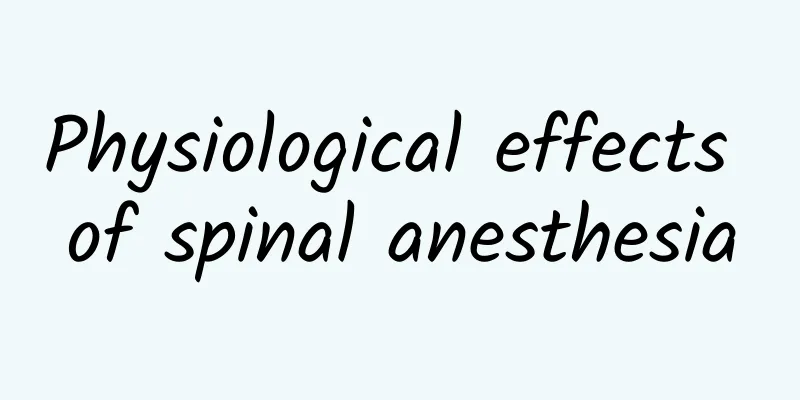Symptoms and treatment of acute enteritis

|
The onset of acute enteritis causes great pain to patients. The onset of acute enteritis is very sudden, leaving many patients at a loss. Therefore, we must understand some knowledge about acute enteritis, know the causes of acute enteritis, and pay attention to the prevention of acute enteritis in daily life. We must understand some symptoms of acute enteritis. Once symptoms of acute enteritis appear, we must seek treatment as soon as possible. The symptoms of acute enteritis are quite obvious. Acute enteritis can cause patients to experience symptoms such as nausea and vomiting. Acute enteritis is more difficult to treat, so we must choose a treatment method that suits us based on our actual situation. 1. Acute enteritis In my country, the incidence rate is higher in summer and autumn, with no gender difference. The general incubation period is 12 to 36 hours. Nausea, vomiting and diarrhea are the main symptoms of acute enteritis. 2. Chronic enteritis The clinical manifestations are long-term chronic or recurrent abdominal pain, diarrhea, indigestion, etc. In severe cases, there may be mucus or watery stools. The severity of diarrhea varies. In mild cases, patients may have bowel movements 3 to 4 times a day, or diarrhea and constipation may occur alternately; in severe cases, patients may have bowel movements every 1 to 2 hours, and may even suffer from fecal incontinence. Some patients may have nocturnal diarrhea and/or postprandial diarrhea. When the rectum is severely affected, a feeling of tenesmus may occur. The feces are mostly paste-like, mixed with a large amount of mucus, and often contain pus and blood. Some patients have fresh blood in their stools, and the lesions are limited to the rectum, which is called hemorrhagic proctitis. The blood or stool is discharged separately, or attached to the surface of normal or dry stool, which is often mistaken for hemorrhoidal bleeding. Patients with proctitis often have mucus and blood in their stools, and may even suffer from fecal incontinence. If the lesions extend above the rectum, blood is often mixed with the stool or bloody diarrhea occurs. Physical examination may reveal mild tenderness around the umbilicus or lower abdomen, hyperactive bowel sounds, and rectal prolapse. 1. Pathogen treatment Viral enteritis generally does not require pathogen treatment and can heal on its own. For bacterial enteritis, it is best to select antibiotics based on the results of bacterial drug sensitivity tests. When suffering from bacillary dysentery, because Shigella dysenteriae is widely resistant to commonly used antibiotics, co-trimoxazole (cotrimoxazole), pipemidic acid, gentamicin, amikacin, etc. can generally be used. Campylobacter jejuni enteritis can be treated with erythromycin, gentamicin, chloramphenicol, etc. Yersinia enterocolitica enteritis is generally treated with gentamicin, kanamycin, co-sulfamethoxazole, tetracycline, chloramphenicol, etc. Patients with mild Salmonella enteritis may not need antibiotics, while patients with severe cases can use chloramphenicol or trimethoprim-sulfamethoxazole. Invasive Escherichia coli enteritis can be treated with neomycin, colistin and gentamicin with good results. Amoebic dysentery, enteritis caused by Giardia lamblia and Trichomonas can be treated with metronidazole (Flagyl). Schistosomiasis can be treated with praziquantel. Oral nystatin is effective in treating Candida albicans enteritis. Patients with systemic fungal infection need to be treated with amphotericin B. 2. Symptomatic treatment Replenish fluids and correct electrolyte and acidosis. For those who are mildly dehydrated and do not vomit severely, oral rehydration can be given. The WHO-recommended oral rehydration formula is sodium chloride, sodium bicarbonate, potassium chloride, glucose or sucrose, plus water. For patients with severe dehydration or vomiting, normal saline, isotonic sodium bicarbonate and potassium chloride solutions, and glucose can be given intravenously. Drugs that reduce intestinal motility and secretion. Atropine, belladonna, and propantheline can be used in small amounts to reduce intestinal motility, relieve pain, and stop diarrhea. Chlorpromazine can also be used. It has a sedative effect and can inhibit excessive secretion of intestinal mucosa caused by enterotoxins, thereby reducing the frequency and amount of bowel movements. Above we introduced what acute enteritis is. We know that acute enteritis is a type of enteritis. Acute enteritis can bring great pain to patients, so we need to understand the clinical manifestations of acute enteritis and how to treat it. The above article introduces in detail the symptoms and treatment of acute enteritis. |
<<: Chinese medicine conditioning for liver fire
>>: What to do with acute bronchitis
Recommend
The efficacy and function of Ganoderma lucidum spore powder and price inquiry
Ganoderma lucidum spore powder is the seeds relea...
Can keratosis pilaris be cured?
Skin diseases are very common in real life, espec...
Does dreaming affect sleep quality?
Almost everyone has the experience of dreaming, a...
Why do newborn babies have one eye open?
Newborns will gradually open their eyes in about ...
The ears are the switch of the kidneys. The more you touch them, the longer you will live. Did you know?
Traditional Chinese medicine believes that the ki...
Do contact lenses have astigmatism?
The contact lenses on the market are simply dizzy...
If you have a cold stomach, an old Chinese doctor will give you some tips to relieve it quickly!
It is easy to have bloating, diarrhea, or even na...
What disease is alternating pulse seen in?
Pulse alternans refers to a pathological conditio...
What to do if your cervical spine becomes stiff
There are many types of cervical spine diseases. ...
Treatment of thyroid nodules by an experienced Chinese doctor
Because thyroid nodules involve almost all thyroi...
Tips for quickly curing constipation
Constipation is a very painful thing. This condit...
Big toe numbness
There are many reasons for numbness of the big to...
Why is my breast sore?
All women should be very concerned about their br...
Can nasal septum cartilage regenerate?
The structure of the nose is very complex and dif...
What causes protruding ear bones?
Some friends have protruding ear bones. Generally...









